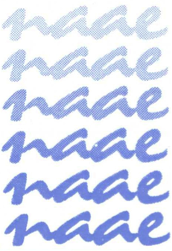PISA creative thinking assessment: Panel discussion outcome
NAAE President, Dr John Nicholas Saunders, recently participated in a forum on PISA creative thinking assessment. Here’s a summary of the outcome, and you can read the full statement here.
KEY TAKE-AWAYS
1. In Australia and just five other countries, “more than 88% of students demonstrated a baseline level of creative thinking proficiency (Level 3)” (p. 24). In addition, and contrary to pervasive failure narratives, ACER’s summary notes “similar results to 2015 and 2018 in mathematics, science and reading” (2023, p. 1) which indicate that Australia has maintained our standing in PISA’s existing three domains.
2. These assessment results show that “academic excellence is not a pre-requisite for excellence in creative thinking,” (PISA, p. 2024, p. 25) and this will come as no surprise to most educators. This is a point around which we can distinguish ourselves as a country, rather than being characterised by the repetition of failure narratives and sliding scores.
3. The report also found that, like other PISA domains, students from migrant and refugee backgrounds overall scored lower in creative thinking than their non-immigrant peers. This correlates with previous research showing that disadvantaged students usually receive less arts engagement and more synthetic phonics and direct instruction, while advantaged students have greater access to the arts.
4. PISA recommends that improving creative thinking across whole school systems “consistently and effectively…requires educators, curriculum developers and assessment designers to have a shared understanding of what creative thinking is, how students can develop creative thinking skills, and how their progress can be measured” (p. 24). High-performing systems in creative thinking have implemented at least two of the following four concrete approaches:
Embedding creativity and/or creative thinking throughout the curriculum.
Supporting educators to recognise, develop and evaluate creative thinking by defining learning progressions or rubrics. (assessment)
Creating opportunities in the curriculum for students to engage in creative and/or interdisciplinary work. Encouraging accountability through monitoring and evaluation.
How can we expand this focus on curriculum and assessment to include teachers, schools, initial teacher education providers, education systems and curriculum authorities?
5. Lack of connection between arts and creativity: There is a lack of understanding of how creative thinking already exists within our education system, especially in the arts. We find the pervasive divorcing of creative thinking from the arts throughout the test and summary results to be alarming and unhelpful.
6. PISA’s summary noted that “Participating in school activities such as art, drama, creative writing or programming classes regularly (once a week) is associated with better performance in creative thinking than doing so infrequently or every day” (p. 25). No explanation of this finding was provided.
